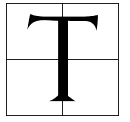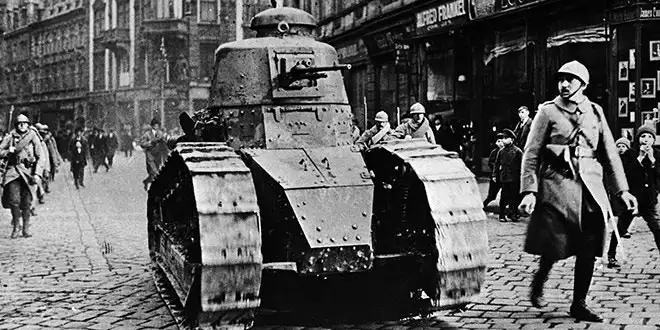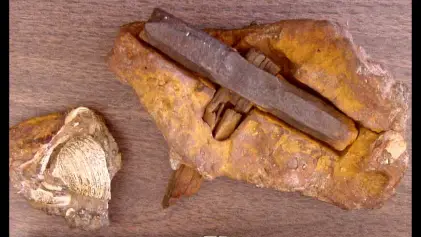 his is it, the piece of engineering that inspired all the tanks and especially that allowed the evolution of armored warfare in late 1918. By the middle of the Great War (World War 1), the French have acknowledged that they were fighting a losing battle because they were just simply giving up to many lives to push the Germans back to their fatherland. If they were to keep at the same rate as 1915 and 1916 they would run out of men before the world would end despite the help of British troops.
his is it, the piece of engineering that inspired all the tanks and especially that allowed the evolution of armored warfare in late 1918. By the middle of the Great War (World War 1), the French have acknowledged that they were fighting a losing battle because they were just simply giving up to many lives to push the Germans back to their fatherland. If they were to keep at the same rate as 1915 and 1916 they would run out of men before the world would end despite the help of British troops.
French engineers saw the need for a new type of weapon that would offer protection from firearms (at least of low caliber) and more importantly which would allow the soldiers to push from trench to trench within no man’s land with more protection. The idea was to lower casualties and create some sort of weapon that can push through with ease the harsh, bombarded, and heavily defended front of the German army.
The technology required to create such a piece of mechanical engineering was there so they started by blueprinting a car and inspiring themself to improve the design into a tank. This sort of concept became a personal project of Louis Renault, the actual creator of Renault cars. The main problem was the weight-to-ratio proportion in order to offer the tank enough armor but at the same time maintain high mobility and quick agility so it won’t be taken so easily out by bombers or artillery.
Even if Renault was not an expert in tracked vehicles he has taken up the opportunity of producing the first tank as a challenge. It was not very difficult to build a tracked vehicle but, designing a tracked vehicle that is supposed to endure projectiles and land mines was a whole different concept. The way in which the design went was the focusing power weight ratio so it would be good enough for the tank to have the ability to run over obstacles on the battlefield, to not get stuck in muddy terrain, and to run over trenches.

The fully rotating turret was not a new concept as it has been used on french armored cars right at the start of the Great War and produced in 1905. An 8mm Hotchkiss machine gun would be used as the main armament however, the 1918 variant would come with a 38mm Puteaux SA cannon. The armor was planned to be from 22 to 8-millimeter thickness spread out thicker to the weaker and more vital points of the tank whilst maintaining a good weight-to-power ration. Renault wanted to use an engine already produced that was producing 18 horsepower but, after the first prototype, he would see that this would not be sufficient for a total weight of 6.4 tonnes.
Therefore Renault chose to design a brand new engine that would serve a specific service to be used in the production of the FT tank. A 4-cylinder 4.5-liter thermosiphon water-cooled engine produces 39 horsepower. This would bring the weight-to-power ration to a nice 6hp per ton (excluding the weight of the crew). The crew would have been made of only two people, the main reason was the lack of french soldiers by 1917 also using only 2 men as crew meant that they could disperse more armored vehicles at the same time.

After 3 prototypes the commission accepted the design, and the first batch was ordered in December 1916 to be delivered to the front by late February 1917. The production of the first batch was quite slow until they industrialized the process. By the end of September 1917, 85 tanks were delivered to the front, and another 2690 by the end of November 1918.
Many historians do agree upon the fact that it was the integration of this tank that actually helped the French to win the war as without them the fight would have been lost before the summer of 1918. Even if the tank did come quite late into the war it was the first armored vehicle to hit the front, what is more, interesting is that after the production of the FT, all other major nations have inspired by the design of the FT tank to produce their own tanks.
We need to thank this great piece of military engineering as without it the course of history might have been different.
Avid Writer with invaluable knowledge of Humanity!
Upcoming historian with over 30 million views online.
“You make your own life.”





